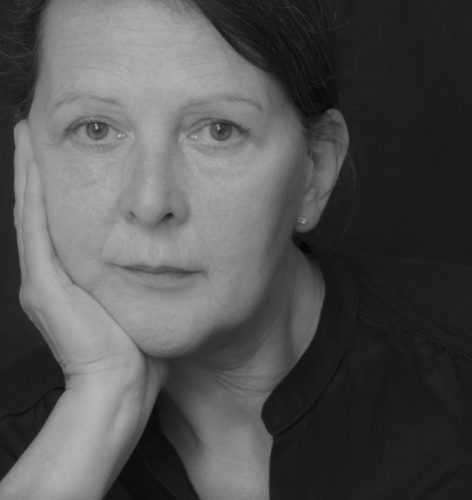
Dans l’objectif de son appareil photo elle voit d’abord une trame autoritaire ; des lignes verticales, horizontales, concaves, puis lorsqu’elle s’en approche, elle capture d’autres compositions abstraites, des pans ordonnés de couleurs et de matières. Elle capture les architectures urbaines avec l’envie de nous surprendre.
Corinne Cavillac réalise ses photographies en instantané, à l’éclairage naturel. Seule compte l’idée, l’astuce qui vient faire basculer un instant, un volume, une ligne, un angle, une texture, une couleur repérée et attrapée vers quelque chose de complètement différent. La prise de vue prend une signification nouvelle, dans un autre cadre renversé, inédit.
Cet agencement de la construction accentue le point de vue structurel. Il est envisagé comme un aspect purement malléable.
A la mesure de l’apparente froideur des façades, entre matérialité et immatérialité, l’artiste dirige son objectif vers une abstraction avérée, une décomposition voire une disparition du réel évident.
L’expérience évoque les peintures à l’esthétique minimale de Charles Neubach où les tonalités, les formes géométriques les plus élémentaires retranscrivent celles des grands ensembles architecturaux des zones urbaines et périurbaines. On pense aussi aux artistes contemporains de l’art cinétique tels que Carlos Cruz-Diez qui revendique « la prise de conscience de l’instabilité du réel. »
Enfin, il est difficile de ne pas avoir en tête les travaux des représentants de l’abstraction géométrique ; Mondrian, Dubreuil, Vasarely, Kelly, Reinhardt ou Morellet.
De la peinture à la photographie, Corinne Cavillac s’inscrit dans cette démarche de déplacements optiques jouant de la perception et de la composition changeante.
Sans arrangement, détournement ou composition numérique, il y a dans son travail toujours un clin d’œil qui nous mène vers le trouble de la dimension des espaces d’une urbanité contemporaine. Une occasion de regarder différemment ce qui nous entoure, de contempler poétiquement l’ordinaire pour en révéler l’extraordinaire.
Through her camera lens she first sees an authoritarian construction, vertical, horizontal, concave lines, then, when she gets closer to it, she is able to capture other abstract compositions, ordered sections of colours and materials. She seizes urban architectures with the desire to surprise us.
Corinne Cavillac takes her photographs with natural lighting, to capture the moment of what she sees, immediate and instantaneous. The only thing that matters to her is the idea, the skill which turns a moment, a volume, a line, an angle, a texture or a colour that she has previously spotted and caught, into something completely different. The shot gets a new dimension in an unprecedented framework through reversal of its elements.
This arrangement of the construction emphasises the structural point of view which is seen as a purely malleable aspect.
Faced with the apparent coldness of the facades, between materiality and immateriality, the artist directs her objective towards a proven abstraction, the decomposition or even the disappearance of the obvious reality.
The experience recalls the minimal aesthetic paintings from Charles Neubach where the most basic tones and geometric forms transpose the ones from the great architectural complexes of urban and peri-urban areas. It also makes us think of contemporary kinetic artists such as Carlos Cruz-Diez who claims « the awareness of the instability of reality ».
Finally, it is difficult not to have in mind the work of the representatives of geometric abstraction; Mondrian, Dubreuil, Vasarely, Kelly, Reinhardt or Morellet.
From painting to photography, Corinne Cavillac’s approach is part of this process of optical displacements, of separations and gathering which makes use of the changing perception and composition.
Without staging, repurposing or digital composition, there is always a reference in her work which leads us to the dimensional disorder of contemporary urban spaces. An opportunity to take a different “look”at what surrounds us, to contemplate poetically the ordinary to reveal the extraordinary in it.
(Caroline Canault / Journalist, Art critic)